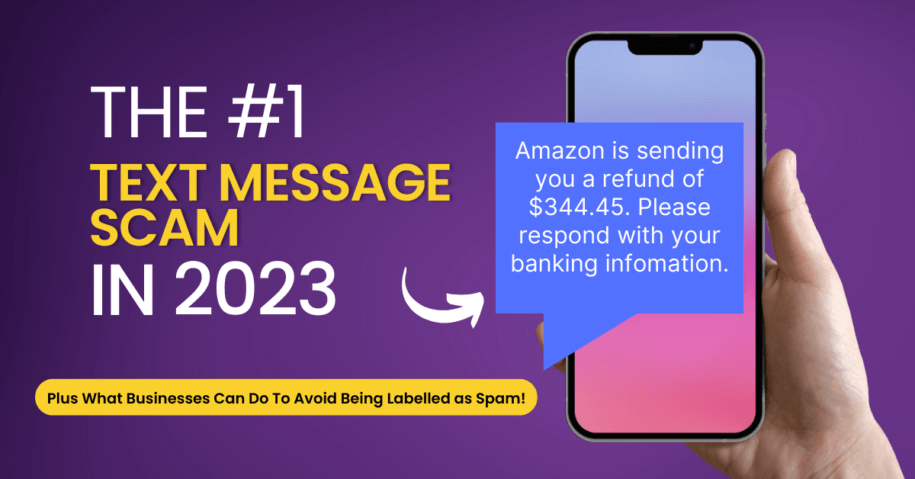Step aside email because text messages is becoming quickly the channel of choice for scammers. When it comes to digital scams, text messages have become a popular channel for fraudsters. The Federal Trade Commission (FTC) recently disclosed the alarming scale of sms scams, revealing that consumers reported losses of over $330 million due to these scams last year alone, more than doubling what was reported in 2021.
In addition, the FTC revealed the most common form of text message scam reported to the agency, and that many of the most common text scams impersonate well-known businesses.
In a data spotlight report, the FTC found that the most reported text message scam: bank impersonations.
Bank Frauds Are #1
Perhaps the most devious revelation is that these fraudsters often masquerade as urgent security alerts or One-Time Passcodes from well-known banks such as Bank of America and Wells Fargo.
Anyone whho clicks-through or responds to the phony request would be connected to a “fake bank representative.”
How bad have fake bank texts become? Reports on fraudsters impersonating banks have increased by nearly 20X since 2019, in less than 5 years.
How to spot spam messages
While bank fraud warnings are #1, scammers don’t stop there. The spotlight report reveals four other common text message scams:
- Messages claiming to offer a gifts, often from a cell phone carrier or retailer;
- Fake claims of package delivery issues from UPS or FedEX;
- Phony job offers for things like mystery shopping and car wrapping; and,
- Bogus Amazon security alerts.
It’s important for you to be skeptical of messages coming in from numbers you don’t recognize. Often times, spam messages will come from unknown numbers and written with very poor grammar.
What can consumers do when they spot a fake?
As a consumer there are things you can do to help stop spammers:
- Do not respond: if you do not respond to these messages, fraudsters will see that these methods are not working.
- Do your research: If you do get a message and you’re not sure if it’s fake or real, do a quick search to see if this is a common fake text. Normally, fraudsters use automation and mass lists to simply blast the same message to lots of people.
- Report the issue: You can report the issue to your cell phone company, device makers and to the FTC or the Canadian Anti-Fraud Centre.
How to avoid your business messages being perceived as spam
Avoiding your marketing text messages being perceived as spam is important to maintain a positive relationship with your contacts and engage effectively with your audience.
Additionally, if your business text number is flagged for spam, the number can be shut down by service providers. Unlocking the number can be a real headache for you and your team.
Here are some tips to help you stay away from the spam:
- Get Consent: Always seek explicit consent from your contacts before sending any type of message. A clear and concise opt-in process where subscribers agree to receive messages from your business is very important.
- Display Your Brand Name: Clearly display your brand name somewhere early in the messages. This way, subscribers can see who the message is from before they even open the text message.
- Give Value: Send messages that offer real value to your subscribers. Whether it’s promotional offers or helpful information, your messages should provide value to your subscribers, this way they won’t forget your number.
There is a lot more you can do to make sure your messages steer clear of the spam. By following these 3 simple suggestions and maintaining a strong commitment to your brand’s core values, you can reduct the chances of your business messages being viewed as spam.

